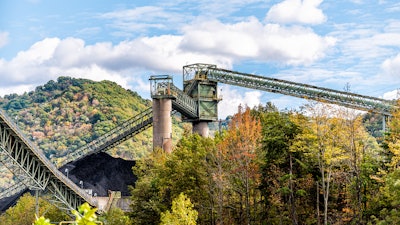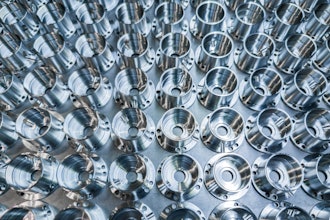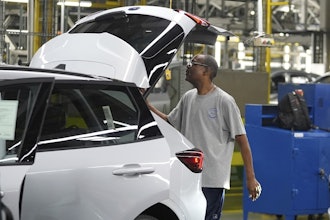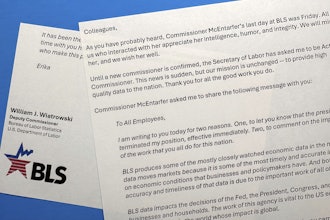
Recently, another company announced its intentions to build a facility in Appalachia. KeyState LLC, which is already building Pennsylvania’s first natural gas-to-blue-hydrogen plant, is planning a second facility somewhere in the Appalachia region[1]. It is not the first company to announce new investments in this strategically important region.
Intel recently announced their intent to build the first semiconductor plant in America in a generation. This will be a $20 billion investment near Columbus, Ohio, with an expansion opportunity of $100 billion. Nucor Corporation announced a $2.7 billion investment in a new sheet steel mill in West Virginia., and Sherwin-Williams announced it will invest $324 million in Statesville, North Carolina to significantly expand its manufacturing capacity and build a new distribution and fleet transportation center.
But why do some remain hesitant to invest? Quite possibly they are waiting for a return to normal.
The hard truth is we won’t return to an old normal, and our industry can’t afford to wait for a new normal. It’s here, and it doesn’t play nice. The sooner we acknowledge it, adapt to it, and move forward, the sooner we will begin to see success within it.
Challenge and crisis are not new to our businesses, our Nation, or the world. Companies have always had to evolve and overcome. Now, we must do so with an increasing sense of urgency in the face of ambiguity. We must be looking ahead to adequately prepare for 2025, 2030 and beyond, regardless of the magnitude of the day’s crisis that we face together.
What do we do with what we’ve learned throughout the past two years? How does it inform our thinking and strategic decision making? We cannot be paralyzed by fear from the uncertainty and unpredictability of the times. Rather, it’s a perfect time to be inspired by the future we can create. Opportunities abound for our operations and expansions to benefit our companies and the communities where we choose to put down roots.
Just a decade ago, great decisions were being made that today are coming to fruition. Shell’s ethane cracker, just outside of Pittsburgh is working toward a safe startup. These were big decisions made as far back as 2012 and even earlier, at a time when the world was just beginning to feel “normal” again after the Great Recession.
These places weren’t chosen at random. They were bold plays based on meticulously calculated investment decisions springing forward from fantastic innovation work. Such decisions have the power to revitalize and strengthen areas that once powered the Nation but suffered the most from economic setbacks. These locations made a lot of sense more than a decade ago, and this scouting strategy made it into long-term plans for companies leaning forward in the saddle.
The Appalachian region in particular is primed for investment. The workforce is well-trained by vocational schools and specialized education programs. And we’re loyal – West Virginia, for example, boasts the lowest manufacturing turnover rate in the U.S. Appalachia is conveniently located within a one- or two-day drive of the majority of the U.S. population and is less likely to be subject to natural disasters like tornados and hurricanes. Cost of living is low, and the region is rich with resources.
Investments like this are enabled by decades of great performance. And not just financial performance. These investments are enabled by strong business fundamentals, diversity of thought, by customer and market demand generation, and by innovation. And, as everyone in our industry knows, exceptional safety performance and environmental protection are the foundational enablers.
Still unsure?
Look at the data. In addition to the geographic and labor benefits, perform benchmarking research, set new targets, and measure progress against those goals. At MATRIC, we are working to implement advanced use of artificial intelligence in the commercial market to find predictive indicators and prescriptive action based on the full spectrum of data analysis out of our Morgantown, West Virginia Advanced Systems Technology business unit.
It is imperative manufacturers predict the trends in advance to position their companies and innovations in the right place, at the right time, before the rest of the market even realizes they are maneuvering. Think of the workforce pipeline and examine areas for expansion with training opportunities aligned with your hiring needs.
Contact your local and state representatives to talk about the business climate in your area and place-based policy options like tax incentives and funding opportunities. Most local governments are part of economic development fabric in their areas and seek input from and partnerships with local business leaders.
Solving problems, becoming safer and more environmentally sound, and being profitable all at the same time is a complex undertaking. The “new normal” is what we make it. Now is the time for confidence, boldness, and the next great decisions to move our industry and our country forward for the next decade and beyond. And Appalachia is the perfect place to do it. At MATRIC, we’ve made our own bold decisions for the future here, and we welcome you to join us.
Steve Hedrick is Chairman, President & CEO at Mid-Atlantic Technology-Research & Innovation Center, which supports the chemical, energy, environmental, and advanced software sectors.
[1] https://www.bizjournals.com/pittsburgh/news/2022/04/20/keystate-plans-second-appalachian-facility.html






















